What I need to know about My Child’s Bedwetting
On this page:
Why does my child wet the bed?
Many children wet the bed until they are 5 years old, or even older. In most cases, the cause is physical and not the child’s fault. The child’s bladder might be too small. Or the amount of urine produced overnight is too much for the bladder to hold. As a result, the bladder fills up before the night is over. Some children sleep too deeply or take longer to learn bladder control. Children don’t wet the bed on purpose. Bedwetting is a medical problem, not a behavior problem. Scolding and punishment will not help a child stay dry.
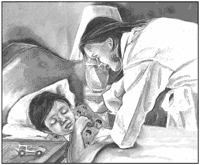
Bedwetting may run in the family. If both parents wet the bed as children, their child is likely to have the same problem. If only one parent has a history of bedwetting, the child has about a fifty-fifty chance of having the problem. Some children wet the bed even if neither parent ever did.
Bedwetting may be caused by an infection or a nerve disease. Children with nerve disease often also have daytime wetting.

A child who has been dry for several months or even years may return to wetting the bed. The cause might be emotional stress, such as loss of a loved one, problems at school, a new sibling, or even training too early.
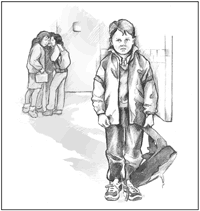
[Top]
How can I help my child stay dry?
The answer is rarely easy. Try skipping drinks before bedtime. Avoid drinks with caffeine, like colas or tea. These drinks speed up urine production. Give your child one drink with dinner. Explain that it will be the last drink before going to bed. Make sure your child uses the bathroom just before bed. Many children will still wet the bed, but these steps are a place to start.
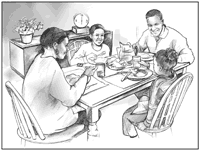
Your child may feel bad about wetting the bed. Let your child know he isn’t to blame. Let her help take off the wet sheets and put them in the washer, but don’t make this a punishment. Be supportive. Praise your child for dry nights.
Be patient. Most children grow out of bedwetting. Some children just take more time than others.
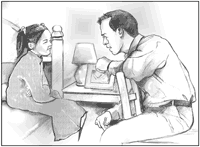
[Top]
Should I take my child to the doctor?
If your child is younger than 5, don’t worry about bedwetting. Many children do not stay dry at night until age 7. Most children outgrow wetting the bed. A single episode of bedwetting should not cause alarm, even in an older child.
If your child is 7 years old or older and wets the bed more than two or three times in a week, a doctor may be able to help. If both day and night wetting occur after age 5, your child should see a doctor before age 7.
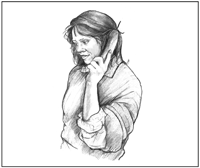
The doctor will ask questions about your child’s health and the wetting problem. Your child will likely be asked for a urine sample. The doctor uses the sample to look for signs of infection. By testing the reflexes in the child’s legs and feet, the doctor can check for nerve damage. Sometimes bedwetting is a sign of diabetes, a condition that can cause frequent urination.
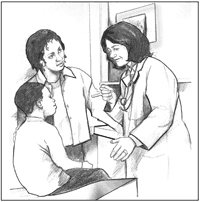
If your child has an infection, the doctor can prescribe medicine. In most cases, the doctor finds that the child is normal and healthy. If your child is basically healthy, a variety of ways are available to help your child stop wetting the bed.
[Top]
What treatments can help my child stay dry?
Talk with your doctor about ways to help your child. Many choices exist. Let your child help decide which ones to try.
Bladder Training
Bladder training can help your child hold urine longer. Write down what times your child urinates during the day. Then figure out the times between trips to the bathroom. After a day or two, have your child try to wait an extra 15 minutes before using the bathroom. If the child usually goes to the bathroom at 3:30 p.m., have him wait until 3:45. Slowly make the times longer and longer. This method is designed for children with small bladders. It helps stretch the bladder to hold more urine. Be patient. Bladder training can take several weeks, or even months.
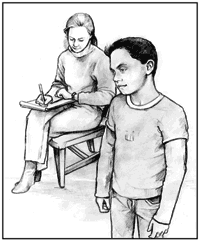
Moisture Alarm
A small moisture alarm can be put in the child’s bed or underwear. The alarm triggers a bell or buzzer with the first drops of urine. The sound wakes the child. Your child can then stop the flow of urine, get up, and use the bathroom. Waking also teaches the child how a full bladder feels.
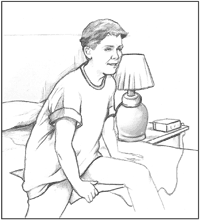
Medicine
Two kinds of medicine are available for treating bedwetting. One medicine slows down how fast your body makes urine. The other medicine helps the bladder relax so it can hold more urine. These medicines often work well. Remember wetting may return when the child stops taking the medicine. If this occurs, keeping the child on medicine for a longer time helps.
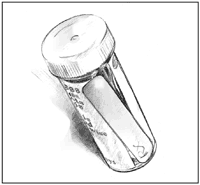
[Top]
Points to Remember
- Normal, healthy children may wet the bed.
- Bedwetting may be a sign of infection or other problems.
- Many children are dry at night by the time they are 5 years old. Others take longer to stay dry.
- Scolding and punishment do not help a child stop bedwetting.
- If your child is 7 or older and wets the bed more than two or three times a week, a doctor may be able to help.
- Treatments include bladder training, alarms, and medicines.
- Most children grow out of bedwetting naturally.
[Top]
For More Information
American Academy of Pediatrics
141 Northwest Point Boulevard
Elk Grove Village, IL 60007–1098
Phone: 847–434–4000
Email: kidsdocs@aap.org
Internet: www.aap.org
American Urological Association Foundation
1000 Corporate Boulevard
Suite 410
Linthicum, MD 21090
Phone: 1–800–828–7866 or 410–689–3700
Email: aua@auanet.org
Internet: www.auafoundation.org
National Association for Continence
P.O. Box 1019
Charleston, SC 29402–1019
Phone: 1–800–BLADDER (252–3337) or 843–377–0900
Email: memberservices@nafc.org
Internet: www.nafc.org
National Kidney Foundation
30 East 33rd Street
New York, NY 10016
Phone: 1–800–622–9010 or 212–889–2210
Email: info@kidney.org
Internet: www.kidney.org
The Simon Foundation for Continence
P.O. Box 815
Wilmette, IL 60091
Phone: 1–800–23–SIMON (237–4666) or 847–864–3913
Email: simoninfo@simonfoundation.org
Internet: www.simonfoundation.org
Society of Urologic Nurses and Associates
P.O. Box 56
East Holly Avenue
Pitman, NJ 08071–0056
Phone: 1–888–TAP–SUNA (827–7862) or 856–256–2335
Email: suna@ajj.com
Internet: www.suna.org
[Top]
Acknowledgments
The National Kidney and Urologic Diseases Information Clearinghouse (NKUDIC) would like to thank the following individuals for assisting with scientific and editorial review of this publication.
Stuart Bauer, M.D.
Harvard University, Boston
Stephen Koff, M.D.
Ohio State University, Columbus
Thanks also to Shirl Lyn Woods of the Johns Hopkins Hospital for facilitating field-testing of this publication.
[Top]
National Kidney and Urologic Diseases Information Clearinghouse
3 Information Way
Bethesda, MD 20892–3580
Phone: 1–800–891–5390
TTY: 1–866–569–1162
Fax: 703–738–4929
Email: nkudic@info.niddk.nih.gov
Internet: www.kidney.niddk.nih.gov
The National Kidney and Urologic Diseases Information Clearinghouse (NKUDIC) is a service of the National Institute of Diabetes and Digestive and Kidney Diseases (NIDDK). The NIDDK is part of the National Institutes of Health of the U.S. Department of Health and Human Services. Established in 1987, the Clearinghouse provides information about diseases of the kidneys and urologic system to people with kidney and urologic disorders and to their families, health care professionals, and the public. The NKUDIC answers inquiries, develops and distributes publications, and works closely with professional and patient organizations and Government agencies to coordinate resources about kidney and urologic diseases.
Publications produced by the Clearinghouse are carefully reviewed by both NIDDK scientists and outside experts.
This publication is not copyrighted. The Clearinghouse encourages users of this publication to duplicate and distribute as many copies as desired.
NIH Publication No. 06–5631
April 2006
[Top]
|






